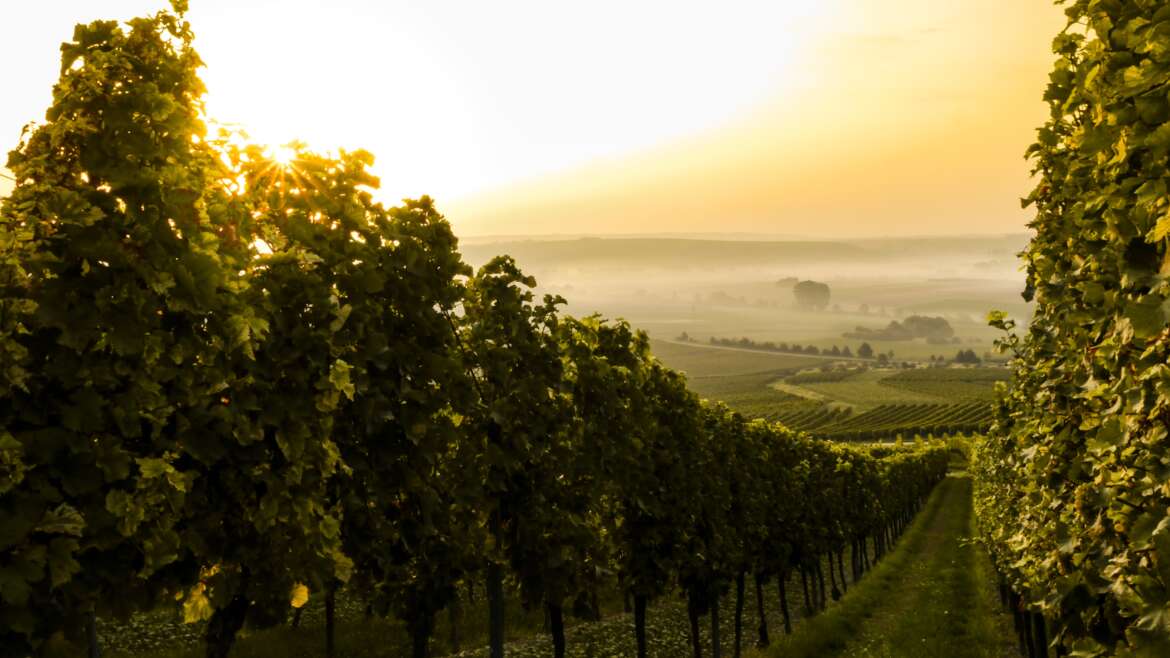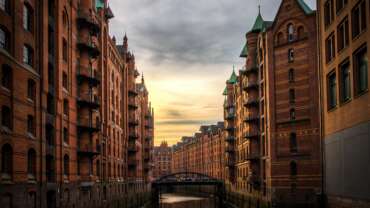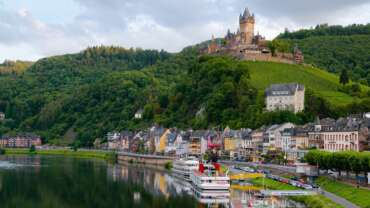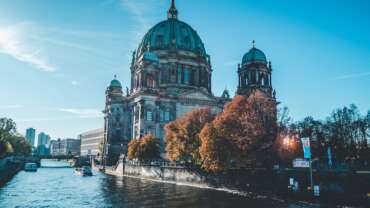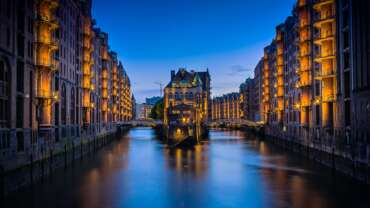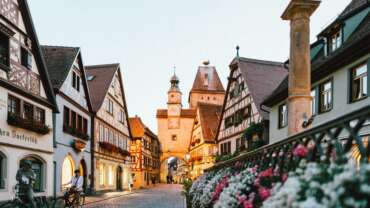Islands of Germany
Despite the enormous diversity of Germany’s islands, they all have one thing in common: they inspire happiness in their visitors. Tranquil havens of natural beauty, family-friendly holiday destinations or places to experience great food and drink and life with a maritime twist.
Amrum – birdwatching and mudflat tours
The North Frisian island of Amrum is one of the best day trip destinations in the whole of Schleswig-Holstein. The fresh North Sea air, mudflats and a beach that goes on for as far as the eye can see are enough to entice anyone looking for an action-packed holiday or restful break.
Spanning some 20 square kilometres, Amrum island is located right in the heart of the Schleswig-Holstein Wadden Sea National Park. Kniepsand beach is a characteristic landmark here, stretching out for 10 kilometres in length and spanning up to 1.5 kilometres in width. The great waves off the beach provide the perfect conditions for surfing, sailing and kiteboarding. You can even climb the steps inside the lighthouse and look down on all the sporting action from way up high.
Amrum is also an exciting destination for birdwatchers, with thousands of sea and coastal birds flocking to the island during breeding season. Why not go for a mudflat tour and marvel at all our feathered friends as you walk? Amrum is well worth a visit all year round, with thatched Frisian houses, seafood restaurants and sailors’ taverns providing warm and cosy spots during the winter months.
Baltrum – a sleeping beauty in the North Sea
Baltrum is the smallest of the East Frisian islands, with parts of it belonging to the Lower Saxony Wadden Sea National Park. Tourists on this car-free island in the middle of the Wadden Sea can expect a peaceful oasis of tranquility.
It almost seems as though time has stood still on this sleeping beauty of an island. There’s a beach spanning four kilometres, where children can play and build sandcastles whilst their parents sit back, relax and take in the sea air from one of the many comfy beach chairs. The offshore sandbanks provide the perfect conditions for beginner surfers and kiteboarders to practice their skills at low tide when the waves are minimal. The spa centre has plenty to please wellness fans, who can book some thalassotherapy, a mud or fango wrap and so much more. If you fancy a leisurely stroll, a nice walking tour of the island could be just what you need. The accommodation on offer ranges from holiday apartments to three-star hotels.
Borkum – a diverse holiday destination in East Frisia
With its coastal climate and pristine natural landscape, Borkum in the Lower Saxony Wadden Sea National Park is a popular choice among tourists. Covering just under 31 square kilometres, Borkum is the largest of the seven East Frisian islands.
Around 30 kilometres from the mainland at Germany’s most north-westerly point, Borkum is a holiday destination with something for everyone. If you’re looking for a health and wellness break, you’ll enjoy indulging in thalassotherapy and breathing in the air, which is low in pollen and rich in iodine. Borkum has plenty of natural highlights too, including the Borkumriff sandbank, which is home to seal colonies. Not to mention the stunning dunes, inland meadows and freshwater pools, where native orchids flower and bloom. If you’re interested in learning about the local history, you can head for the island’s museum or go for a stroll to the Old Lighthouse, which will take you on a tour of the oldest foundations on Germany’s North Sea coast. The high ropes course is a newer addition to the island, boasting spectacular views over the North Sea from 60 different platforms right on the coast.
Fehmarn – Germany’s sunshine isle
With 2,200 hours of sun every year, endless natural beaches along 78 kilometres of coastline, picturesque lakes and rugged cliffs, Fehmarn is a charming holiday destination.
It’s hard to imagine a more relaxing setting than this large island in the Baltic Sea. Spanning some 185 square kilometres, this is one of Germany’s sunniest regions, which has a mild, stimulating climate. If you’re looking for pure relaxation, you can indulge in the spa treatments at the FehMare pool complex or head to the sands of the vast and gently sloping beaches that promise fun for all the family. And if sports holidays are more your thing, you won’t be disappointed either. You can go horse riding, play golf, sail, dive or, at the right time of year, enter the annual Fehmarn Marathon. Head off on a hike to discover fields, meadows, the coastline and more. For example, several hundred species of birds flock to the Wallnau Waterbird Reserve, widely regarded to be one of north Germany’s most precious ecological environments.
Föhr – a Frisian holiday destination with a Caribbean twist
The island of Föhr is located in the north-western part of Schleswig-Holstein. A 50-minute mini cruise from Dagebüll to the ‘Frisian Caribbean’, taking in the Halligen islands on the way, is all it takes to get visitors into the holiday mood.
After all, even the journey takes the tempo down a notch. The ferry glides at a leisurely pace through the Schleswig-Holstein Wadden Sea National Park, a stunning home to more than 10,000 species of flora and fauna and a UNESCO World Natural Heritage Site since 2009. Föhr is not known as the Frisian Caribbean for nothing: Sheltered from the wind by Amrum and Sylt, it is a lush green island where a diverse range of plants flourish. Water sports fans will be in their element along the 15 kilometres of sandy beach to the south of the Wyk ferry port. The island also has a rich history of tradition. You can find out more at the Frisian Museum or experience it for yourself at the annual Biikebrennen celebration that is thought to chase away the winter.
Heligoland – Germany’s only island in the high seas
The stunning red sandstone cliffs of Heligoland jut out of the water around 70 kilometres from the mainland. The island boasts a unique natural landscape and a mild maritime climate.
Hidden way out in the North Sea, Heligoland is often referred to as Germany’s only island in the high seas, even though this is not strictly true from a geographical or legal viewpoint. Heligoland’s remote location and complete lack of cars mean that the air is virtually free from pollen, which is great news for anyone that suffers from allergies. The neighbouring island of Düne makes for a stunning sunbathing spot.
Tourists on Heligoland can follow themed trails all the way to Lummenfelsen, the nature conservation area with the most breeding birds in the whole of Germany. And there is plenty of flora and fauna to take in on the way too. One delicacy that’s not to be missed is the famous Heligoland lobster, which can be purchased from the heritage-protected lobster huts along the harbour.
Hiddensee – an island of wellness and culture
Boasting endless stretches of white sandy beaches, salt marshes, rugged cliffs and pine forests, Hiddensee is a happy place for many. There are also art galleries, museums, lectures and concerts galore on this island in the Baltic Sea.
Covering just under 19 square kilometres, Hiddensee is located just off the west coast of Rügen in the Baltic Sea. Affectionately known as ‘Söte Länneken’ (sweet little land), this island’s stunning and varied natural landscape in the Western Pomerania Lagoon Area National Park doesn’t fail to impress visitors. No end of writers and artists have been seeking inspiration on the island for decades. Hiddensee has built up a reputation as a cultural hotspot thanks to all the events going on. Families are free to explore the island on foot, by bike or on horseback. Sea buckthorn is a local delicacy that grows all over Hiddensee and tastes delicious in cakes or juice drinks.
Juist – a magical wonderland in the Wadden Sea
The locals call Juist ‘Töwerland’ in their dialect, which, in its rough translation, makes the island something of a magical wonderland. And you can see where it gets its name from when you admire the 17 kilometres of beach between the Wadden Sea and wild North Sea, which you can taste, smell and hear no matter where you are on the island.
The long East Frisian island of Juist sits just a few kilometres off the mainland, between Borkum and Norderney. Wherever you are on this narrow strip of land in the North Sea, you know you won’t be far from the coast and mudflats. Tourists can marvel at the ebb and flow of the tides and sometimes spot colonies of seals at the east end of the island. There’s no excuse not to stay healthy here – head off on a walk along the mudflats or a bike ride around the car-free island. Or maybe you’d rather have a spa treatment or thalassotherapy? It’s easy to feel at one with the sea and nature on Juist, which has led to an ambitious sustainability target having been set, with the island aiming to be carbon-neutral by 2030.
Langeoog – a natural paradise sandwiched between mudflats and the sea
The water tower makes for a stunning landmark on the East Frisian island of Langeoog. With the sandy beach stretching out for 14 kilometres, the dunes towering up to 20 metres tall and the meadows full of flowers, it’s easy to see why this island is a popular holiday destination.
Sandwiched between mudflats and the sea and spanning some 20 square kilometres, Langeoog has always felt the full force of nature. Visitors can head to the water tower, which dates back to 1909, to enjoy stunning views of the island with its protective dunes and natural embankments. A guided tour through the mudflats of the Lower Saxony Wadden Sea National Park will allow you to get close to nature – you may even be lucky enough to spot some herring gulls. Alongside hikes, bike rides and horseback tours, a holiday on Langeoog means surfing, swimming and strolling. And the kids can happily build sandcastles on the beach. You’re in for sun, sand and wind on Langeoog, no matter the season.
Norderney – a wellness break for fans of thalassotherapy
With untouched natural landscapes in the east and white sandy beaches stretching out for kilometres in the north, Norderney is an exceptional centre for thalassotherapy in the Wadden Sea, a stunning UNESCO World Natural Heritage Site.
By the time you are making your way to Norderney, Germany’s oldest North Sea spa resort, you will start to leave all the strains and stresses of everyday life behind you. The second largest of the East Frisian islands doesn’t fail to impress with its beautifully unruly beaches and pristine natural landscapes. No matter what time of year you visit. Spanning 26 square kilometres in total, around 85 percent of the island falls within the Lower Saxony Wadden Sea National Park. But this incredible location doesn’t just appeal to nature lovers. Water sports enthusiasts, sun worshippers, cyclists and hikers will feel right at home here, too. Breaks with a focus on health are a big deal on Norderney, which is the proud home of bade:haus, Europe’s largest thalassotherapy centre.
Pellworm – a North Sea haven in the middle of the mudflats
The North Frisian island of Pellworm is situated in the heart of the Schleswig-Holstein Wadden Sea National Park. Pristine beauty, peaceful tranquillity and plenty of sunshine make this island a hidden gem for anyone in need of a little rest and relaxation.
This vast island in the North Sea spans 37 square kilometres and life here is very much ruled by the tides. If the ebb and flow of the sea allows it, visitors can set off on a tour to explore the mudflats, walking past mussels, lugworms and crabs on their way to the neighbouring Halligen islands. Holidaymakers can feel truly at home here, with the down-to-earth attitude and warm welcome from the locals, the rural charm of Pellworm itself and the overriding sense of peace and quiet leaving visitors to breathe easy. It’s hard not to fall in love with the island, which just so happens to be a romantic location itself. Couples can get married at the lighthouse in Pellworm, with a traditional captain’s ceremony to round off proceedings.
Poel – an island located between three Hanseatic cities
It’s hard to resist Poel with its fresh sea breeze and picturesque landscapes. Unspoilt natural beauty, endless sandy beaches and a charming harbour are all part and parcel of life on the largest Baltic Sea island in Mecklenburg.
The idyllic island of Poel is situated in the triangle between the three Hanseatic towns of Rostock, Wismar and Lübeck. The landscape is rich and diverse, with the rugged cliffs standing in stark contrast to the gently sloping sandy beaches. Special protection is afforded to the salt marshes on Poel and the island of Langenwerder off the coast, where no end of coastal birds flock to breed. There are plenty of water-based activities on offer, such as trips on the passenger ship from the beautiful Kirchdorf Harbour, a spot of traditional fishing on a cutter boat and sporting adventures on pedalos, water skis and more.
Rügen – traditional seaside resorts and world-famous chalk cliffs
Rügen is Germany’s largest island. Spanning more than 900 square kilometres, this island has all of the ingredients for the perfect holiday in abundance. Think beaches that go on as far as the eye can see, untouched natural landscapes and luxurious seaside resorts.
Rügen is one of the most popular holiday destinations in the whole of Mecklenburg-Western Pomerania. Even writer Thomas Mann had a soft spot for the seaside resorts of Binz and Sellin, which still manage to hold on to their nostalgic charm. The same can be said of Racing Roland, a narrow gauge railway linking up the island’s seaside resorts that is now over 100 years old. On top of sandy beaches stretching across 60 kilometres, Rügen also boasts large national parks, world-famous chalk cliffs, sleepy fishing villages and magnificent manor houses. The island attracts more than 100,000 spectators every year for its Störtebeker Festival open-air theatre event in Ralswiek, which is home to a unique natural stage on the banks of the Great Jasmund Lagoon.
Spiekeroog – a lush island that dreams are made of
Spiekeroog is a lush green island in the heart of the North Sea, where visitors are treated to pristine nature, vast beaches and a view of the seemingly never-ending sea. This is the perfect place to slow down the pace and recharge those internal batteries.
Sandwiched between the neighbouring islands of Langeoog and Wangerooge, Spiekeroog in the Lower Saxony Wadden Sea National Park is surprisingly green thanks to its abundance of oaks and black pines. During the summer months, the purple of lavender is added to the colour palette, whilst the sea buckthorn brings a splash of orange in the autumn. And all of this plays out in front of an ever-changing dune backdrop. The wellness treatments and clean air make the island a popular choice for health fanatics too. And why not enjoy an authentic North Sea experience? Take a boat trip to see the seal colonies, enjoy a delicious meal at a seafood restaurant or sip on a cup of East Frisian tea (complete with “Kluntje” rock sugar) in a cosy tea room.
Sylt – the Queen of the North Sea
The largest of the North Frisian islands is a popular destination among foodies and water sports fans. Located just off Schleswig-Holstein’s North Sea coast, Sylt has plenty to offer holidaymakers with wellness on their mind.
When you picture Sylt, imagine some 40 kilometres of sandy beaches to the west, the vast Wadden Sea to the east and vibrant spa resorts, such as Westerland and Wenningstedt, boasting no end of wellness treatments. This ‘Queen of the North Sea’ in the Schleswig-Holstein Wadden Sea National Park covers 99 square kilometres, making it Germany’s fourth largest island. The Hindenburg Dam causeway provides direct links to the mainland by car or train. Sailors (including some international pros) and golfers are just as keen to visit Sylt as nature lovers, who are sure to revel in the fact that half of all of the island’s land is registered as a protected area. Foodies and night owls will also love all that Sylt has to offer, too.
Ummanz – Rügen’s little sister
Ummanz is home to charming fishing villages and untouched natural landscapes. Rügen’s little sister island in the Baltic Sea has a unique atmosphere of peace and tranquillity that is perfect for tourists in need of some rest and relaxation.
Spanning some 20 square kilometres, Ummanz is linked to Rügen by a long bridge. The pastures, meadows and farmland on this extremely flat island are only just more than three metres above the lagoon waters of the larger of the two neighbouring islands. Located in the Western Pomerania Lagoon Area National Park, Ummanz is surrounded by lots of other small islands, where visitors can happily watch herons, geese, cormorants and eagles in peace. Waase, the largest village on the island, is home to a church that is well worth a visit despite not looking at all special from the outside. Inside, you will be wowed by a beautifully carved altar that was originally created for the Hanseatic town of Stralsund in Antwerp in 1520.
Usedom – a sun-drenched island in the Baltic Sea
Usedom combines the traditional spa resort feel with stunning nature. To be precise, holidaymakers can expect to find 42 kilometres of fine white sandy beaches and beautiful natural landscapes featuring footpaths and cycle paths covering several hundred kilometres.
Usedom in the Baltic Sea is Germany’s second largest island and it is treated to a surprising amount of sunshine. Some visitors come to the island to enjoy the sea and sand, whilst others prefer the Achterland outback and choose to explore it on long hikes or bike rides. The historical seaside resorts of Ahlbeck, Heringsdorf and Bansin boast a special charm with their piers and spectacular coastal architecture. There is plenty of accommodation to choose from, including luxury hotels right by the sea, friendly guest houses and barges. Culture vultures are in for a treat, as the island has a calendar packed with classical music, cabaret, literature and theatre.
Wangerooge – a spa resort in the Wadden Sea
Wangerooge is a health resort and spa in the North Sea. Situated at the heart of Lower Saxony Wadden Sea National Park, the island’s landscape features beaches, dunes and salt marshes. Tourists can rest assured that relaxation is par for the course here.
Wangerooge is the second smallest of the seven East Frisian islands and the most easterly of them all. There are no cars on the island, which can be explored on a boat at the harbour or on a train at the village train station, with the railway dating back more than 100 years. The long beach is dotted with brightly coloured beach chairs for relaxing during the summer months and there are plenty of shops, hotels and restaurants to check out, too. The island is ideal for families, active tourists and anyone looking to relax. Take your pick from beach volleyball, windsurfing, sandcastle building or health and wellness treatments at the spa facilities, where visitors can recharge their batteries and restore their inner peace.



